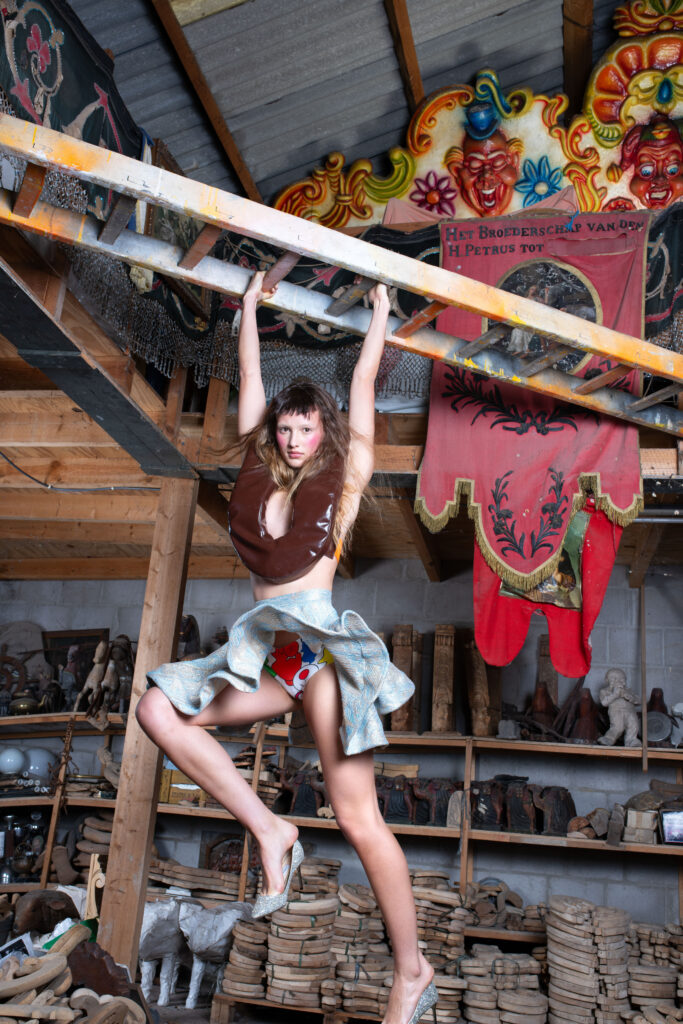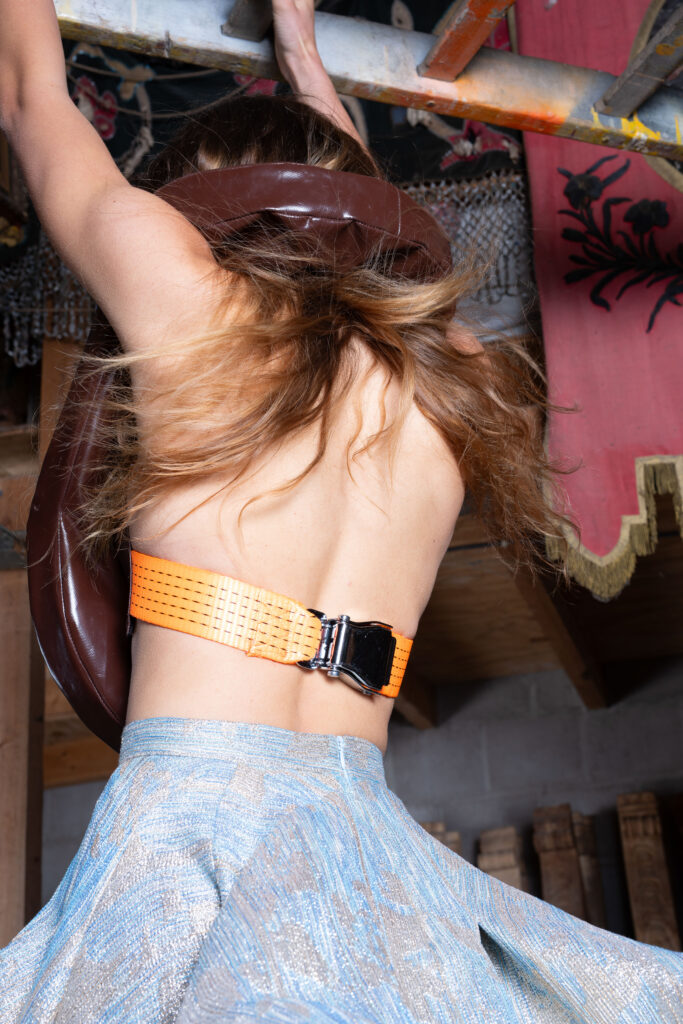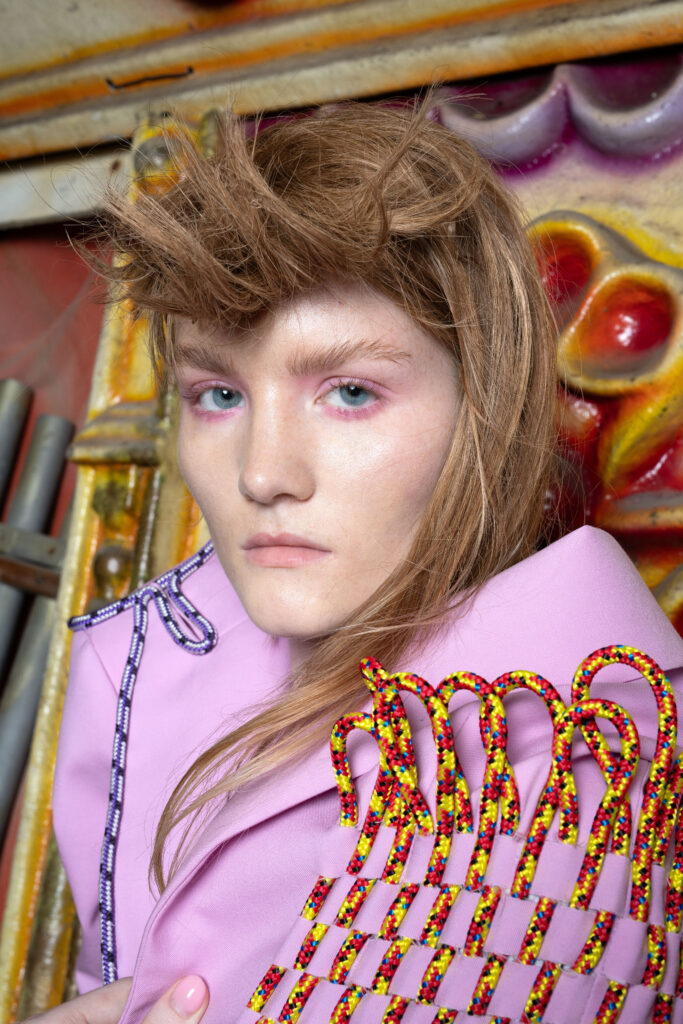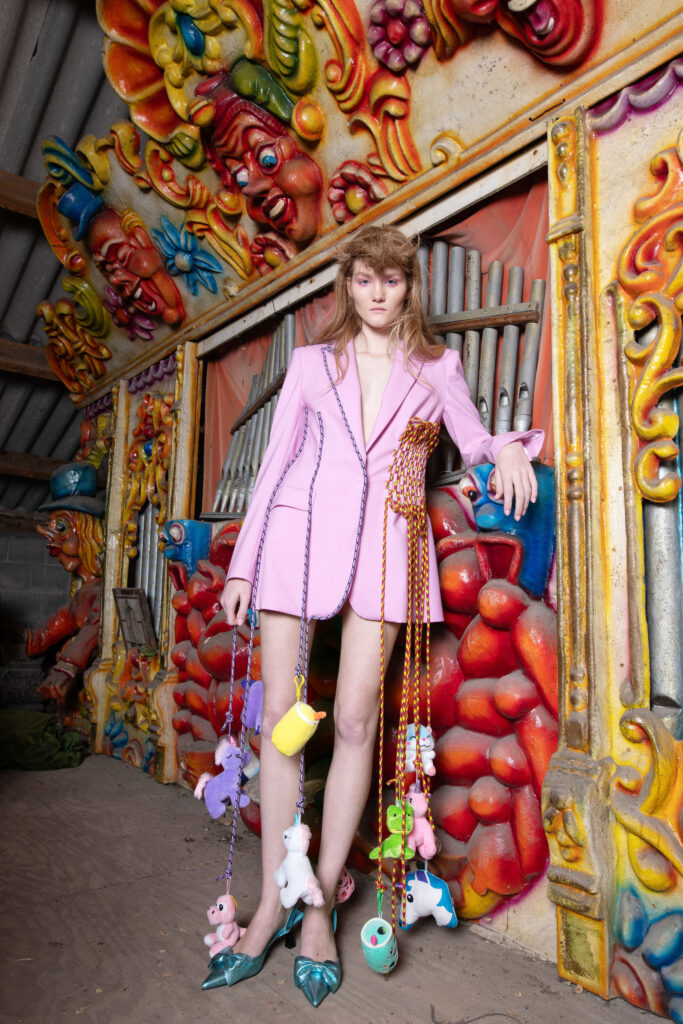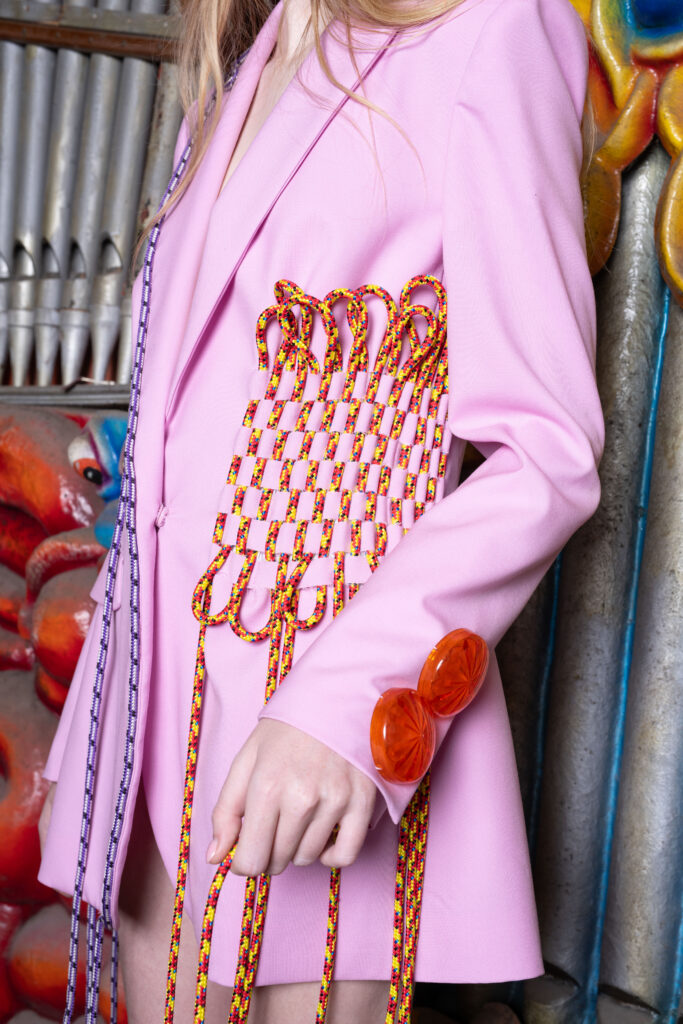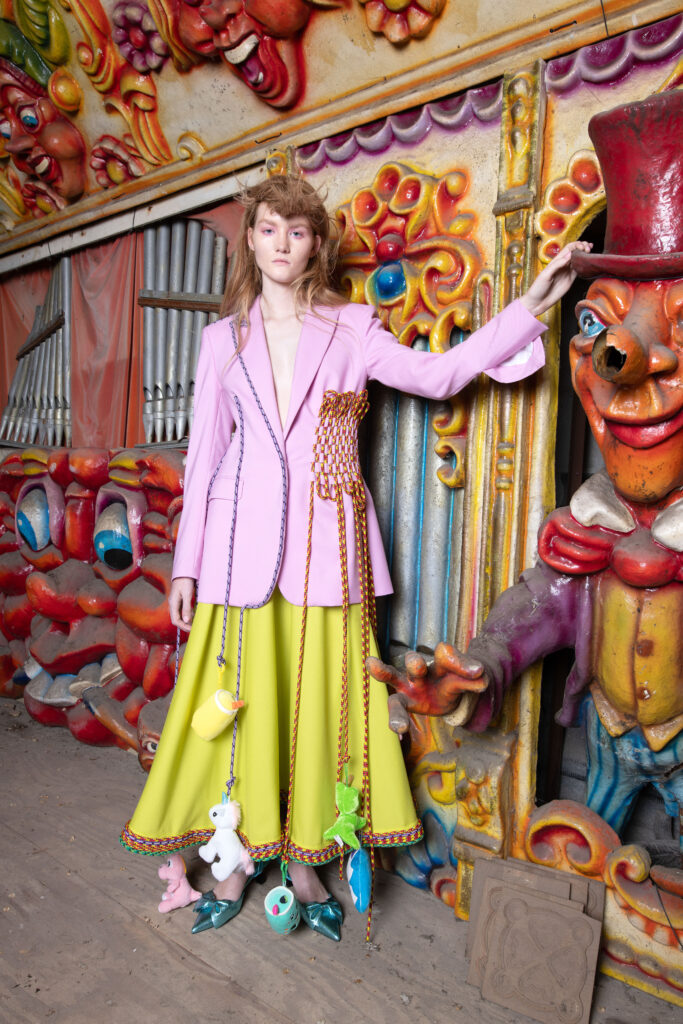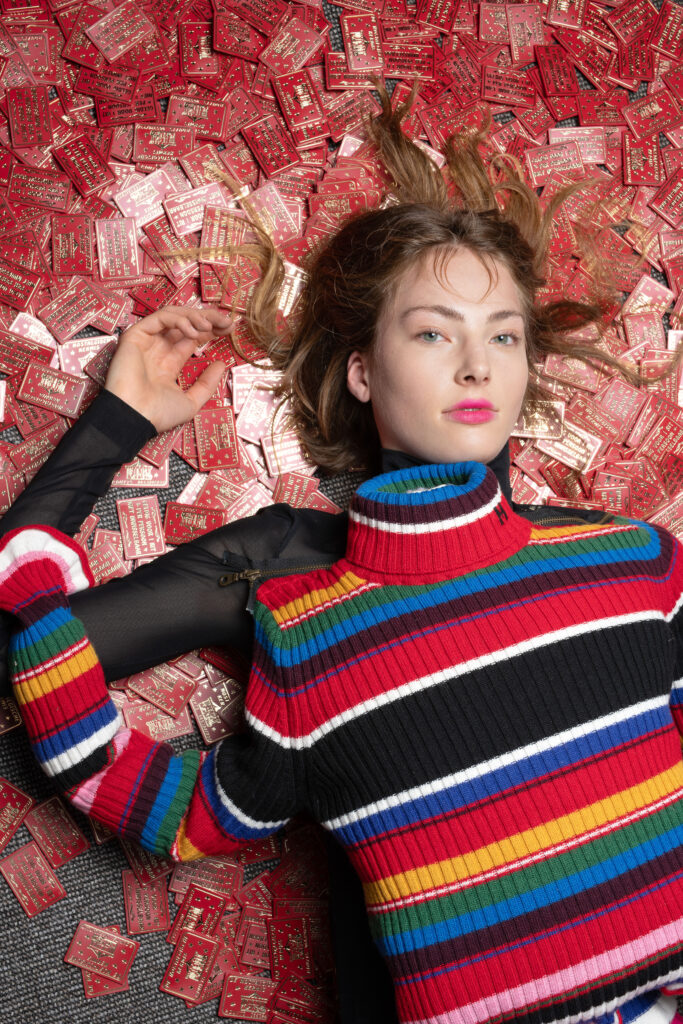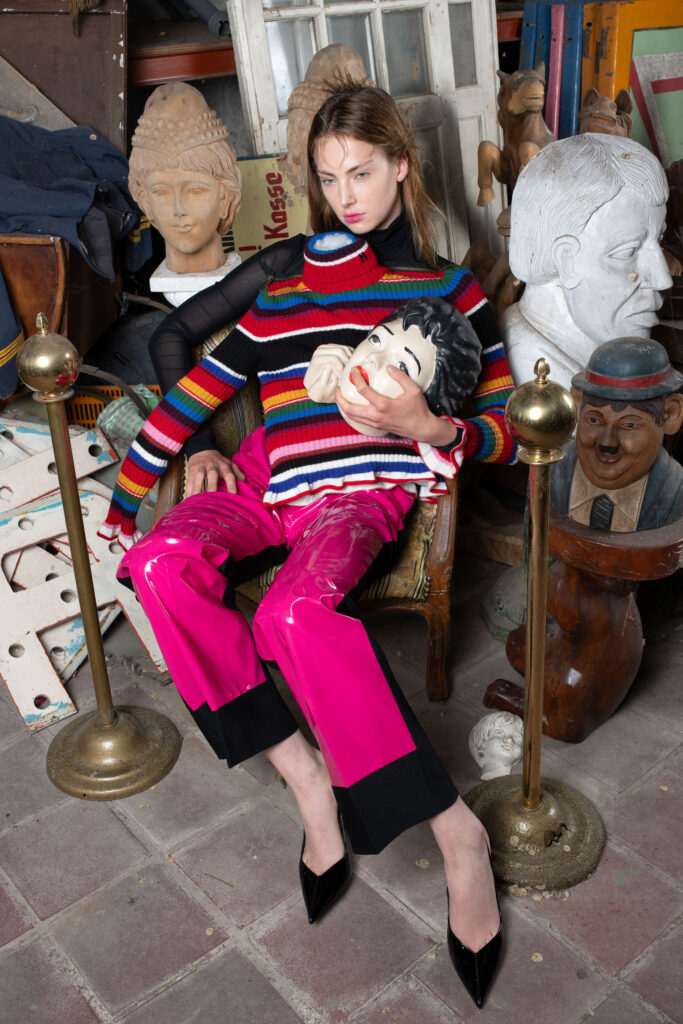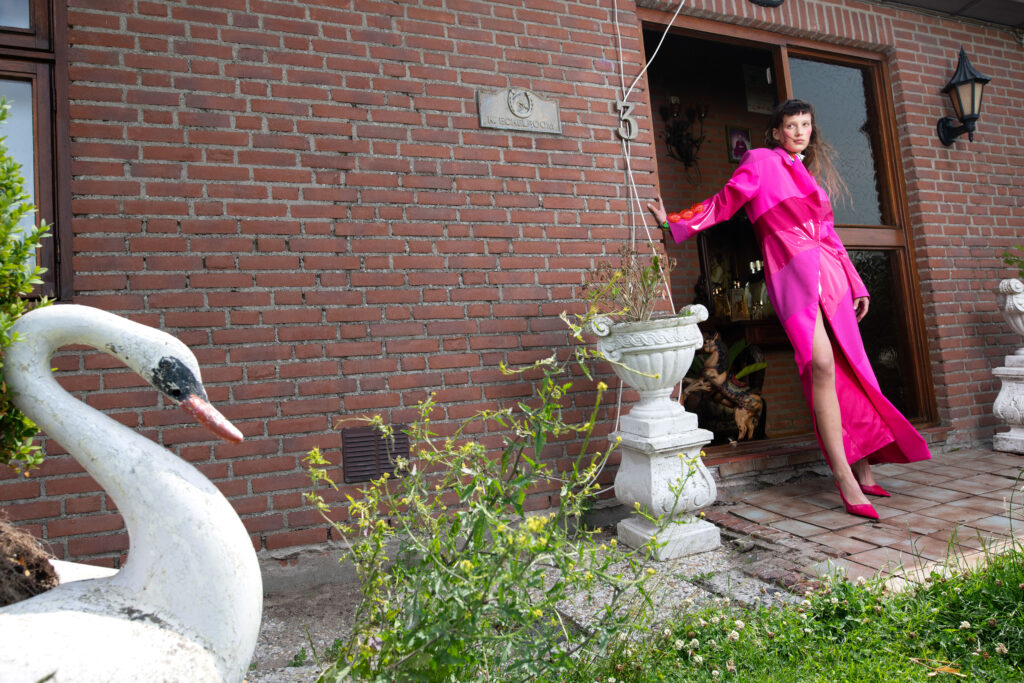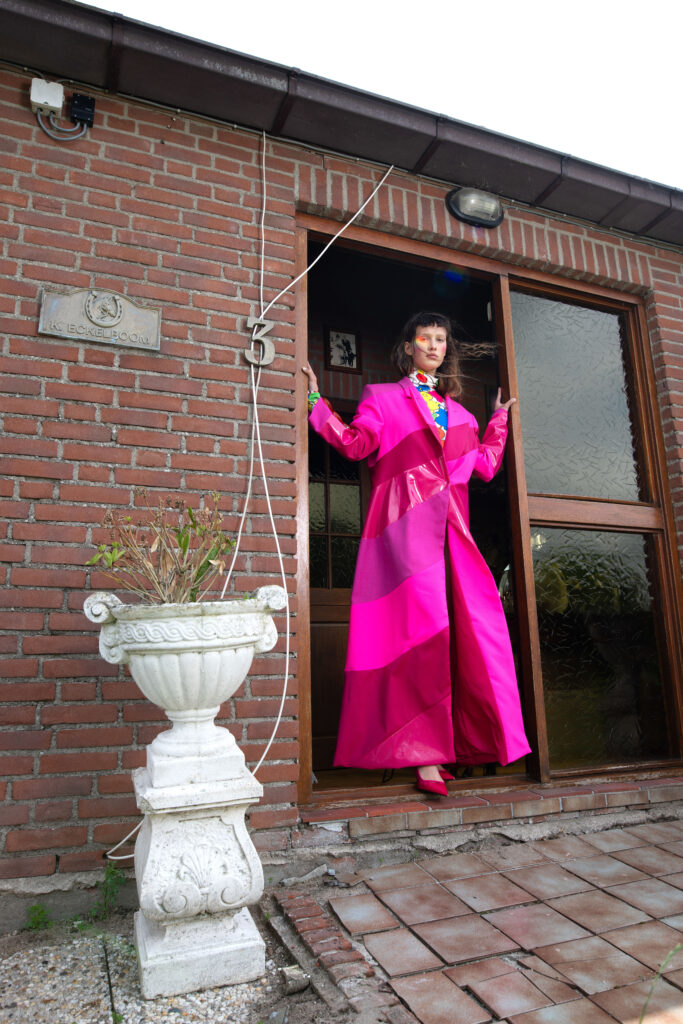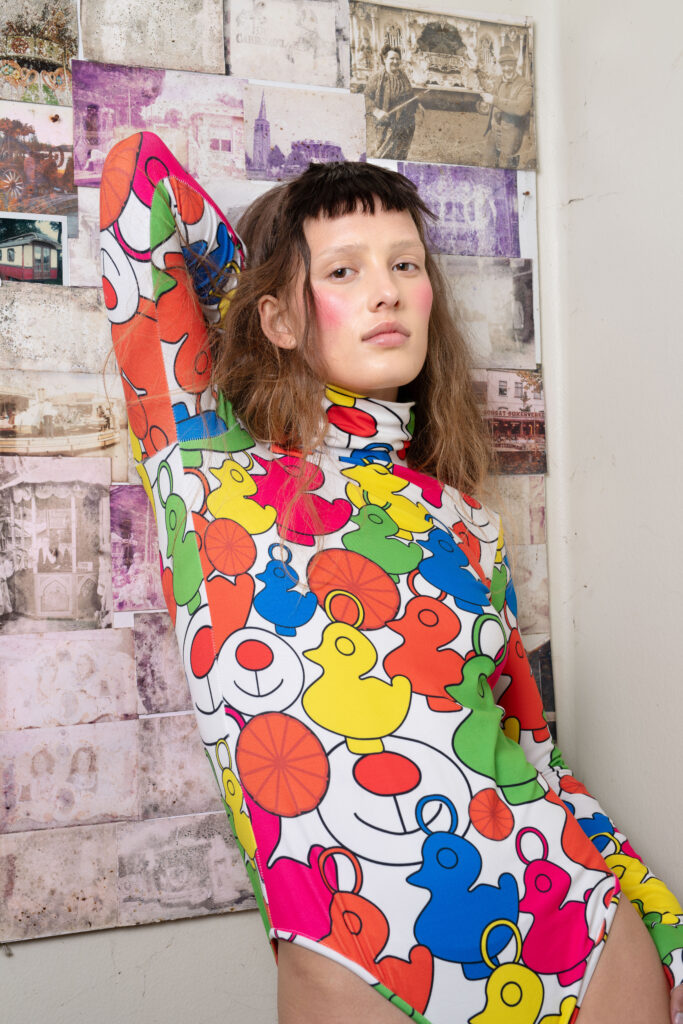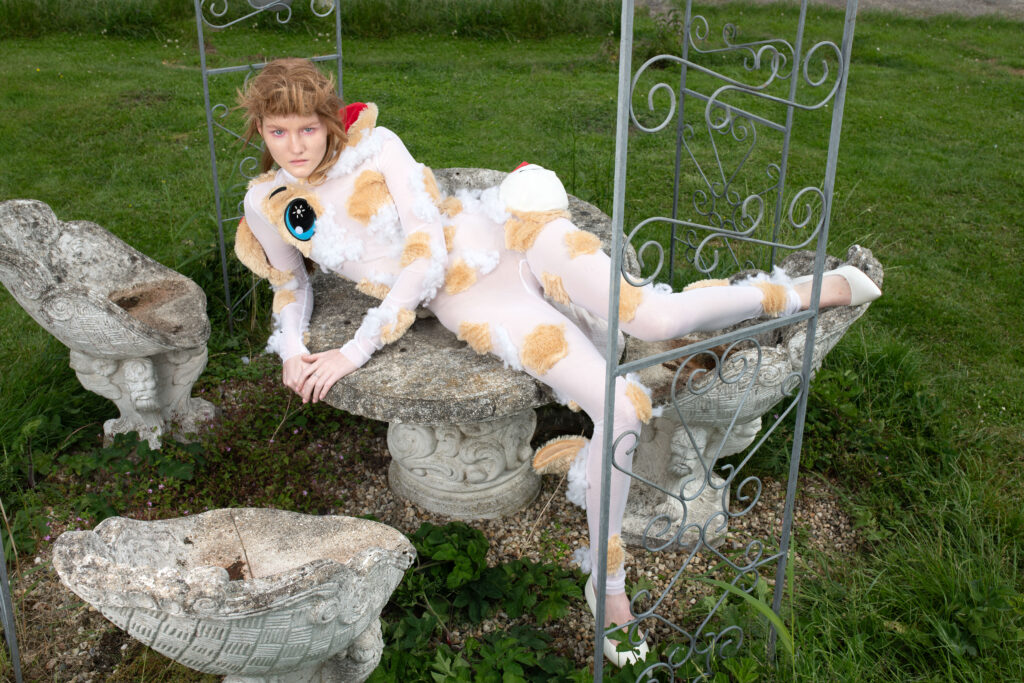Het meisje van de kermis – Concept
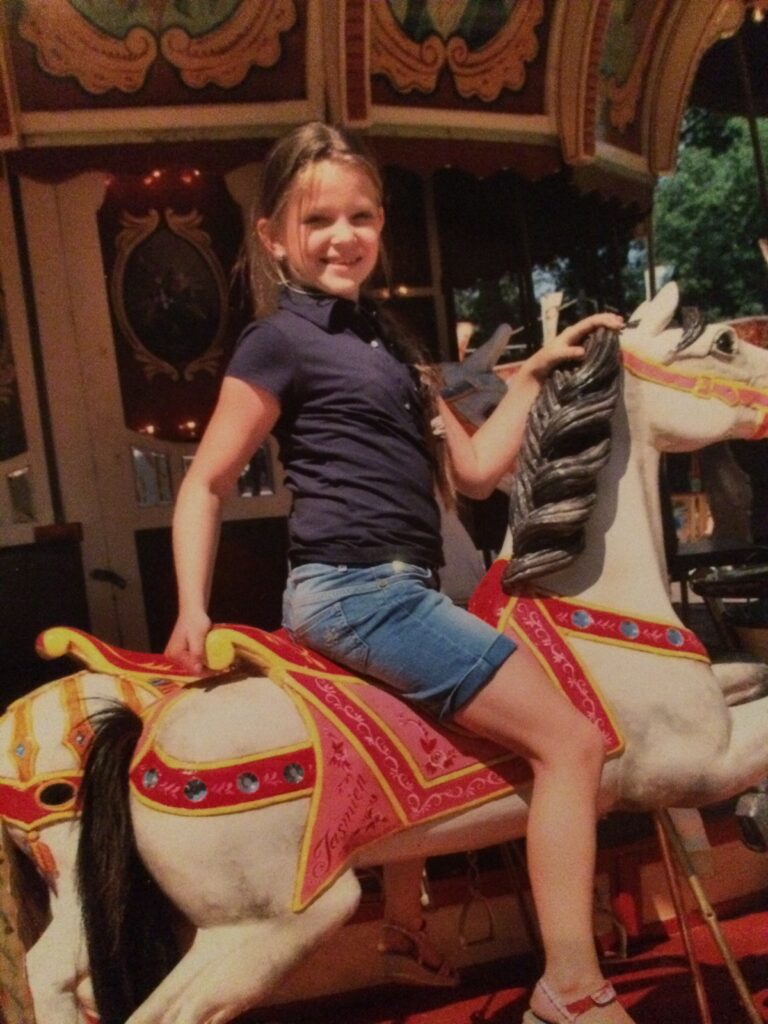
A surreal tailoring collection where funfair fantasy meets fashion precision – because you can take the girl out of the funfair, but never the funfair out of the girl.
As a girl who grew up on the funfair, its surreal, dreamlike world became my normal. I didn’t know any different. It’s also a world I once stepped away from, because my dream was to become a fashion designer. But for this collection, I dove back into my roots, and all the inspiration that comes with them. And I love it.
To better understand my heritage, I created a personal timeline – tracing generations of my family who travelled with the fair. One of my great-great-grandfathers was a fakir, performing fortune-telling acts. The other was known as the boeienkoning, a daring escape artist. Their worlds were theatrical, illusory, and always a bit surreal and that spirit lives on in me.
In this collection, I explore the tension between two seemingly opposite worlds: refined tailoring and the wild energy of the funfair. By combining sharp cuts with upcycled objects from the fair, I create surreal silhouettes that blur the line between structure and surrender.
My muse is a young, sophisticated woman, someone like a young Anna Wintour. Perfectly poised on the outside, but still carrying glitter from her past underneath her skin. She embodies the duality of this collection: composed yet chaotic, classic yet unexpected.
This is a world where a tailored coat spirals like a candy cane, and the boeienkoning’s chains are woven into a sharp blazer. Because you can take the girl out of the funfair, but never the funfair out of the girl.
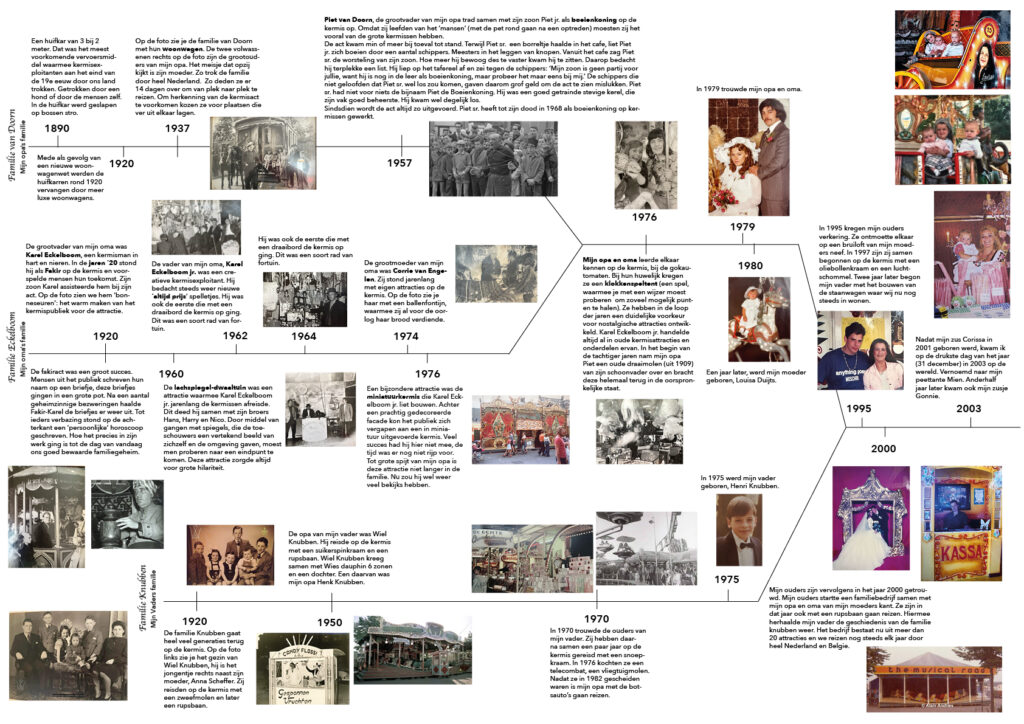
The Fakir
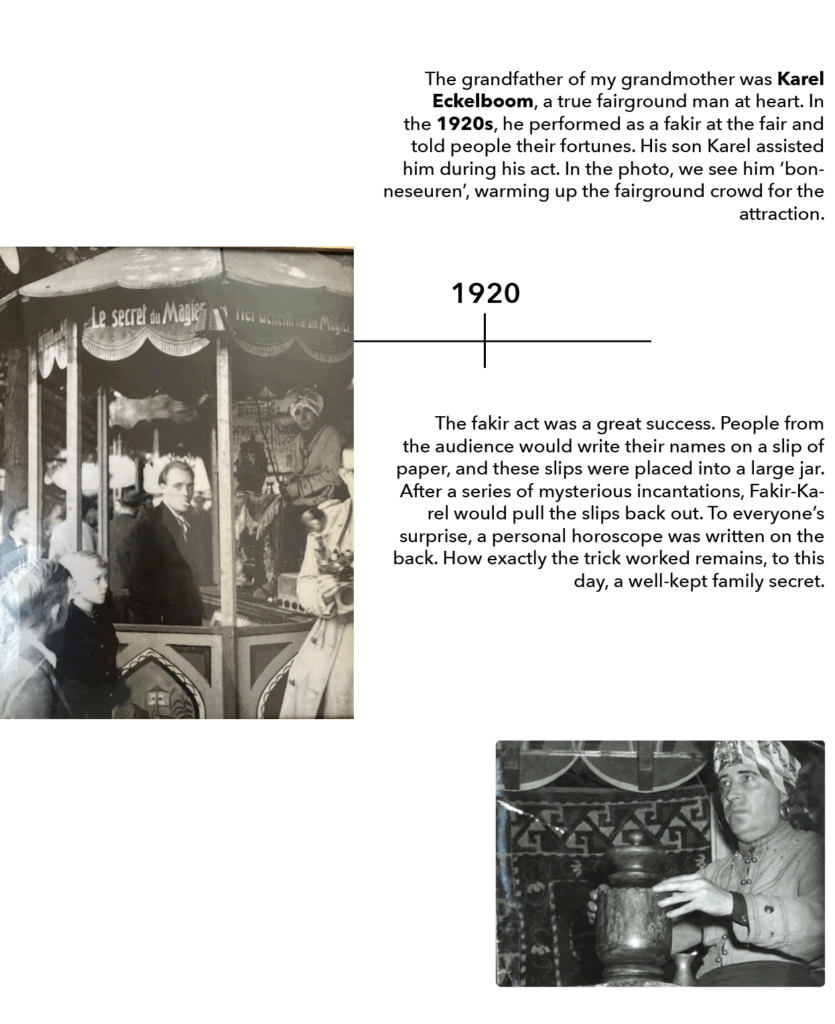
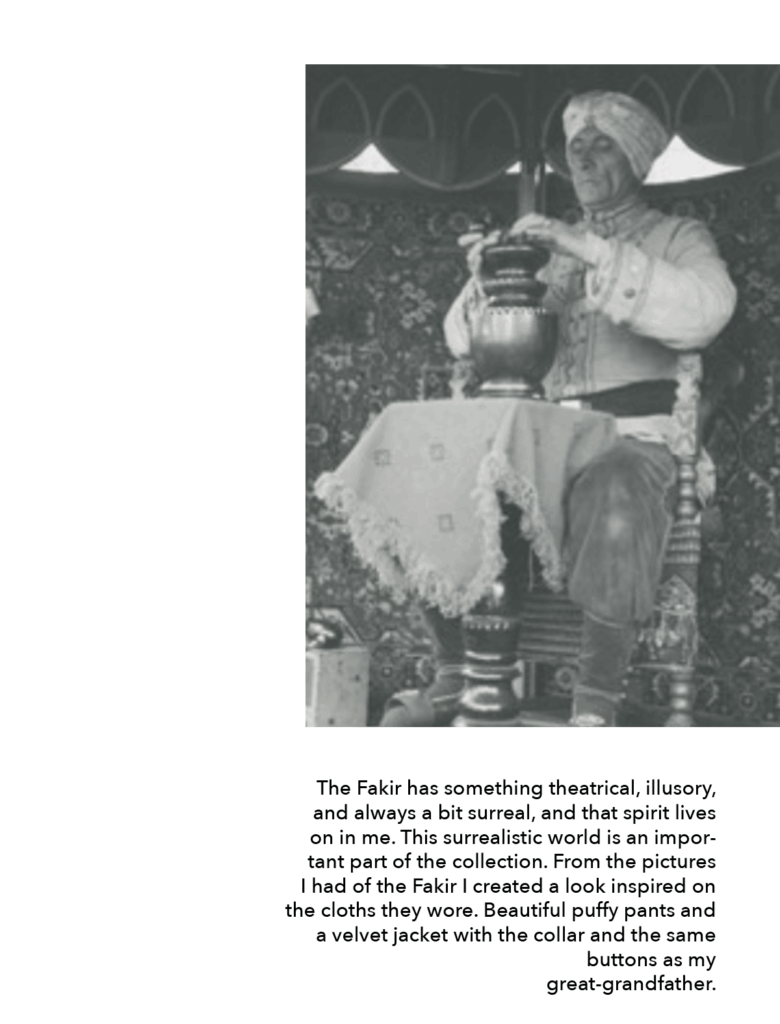
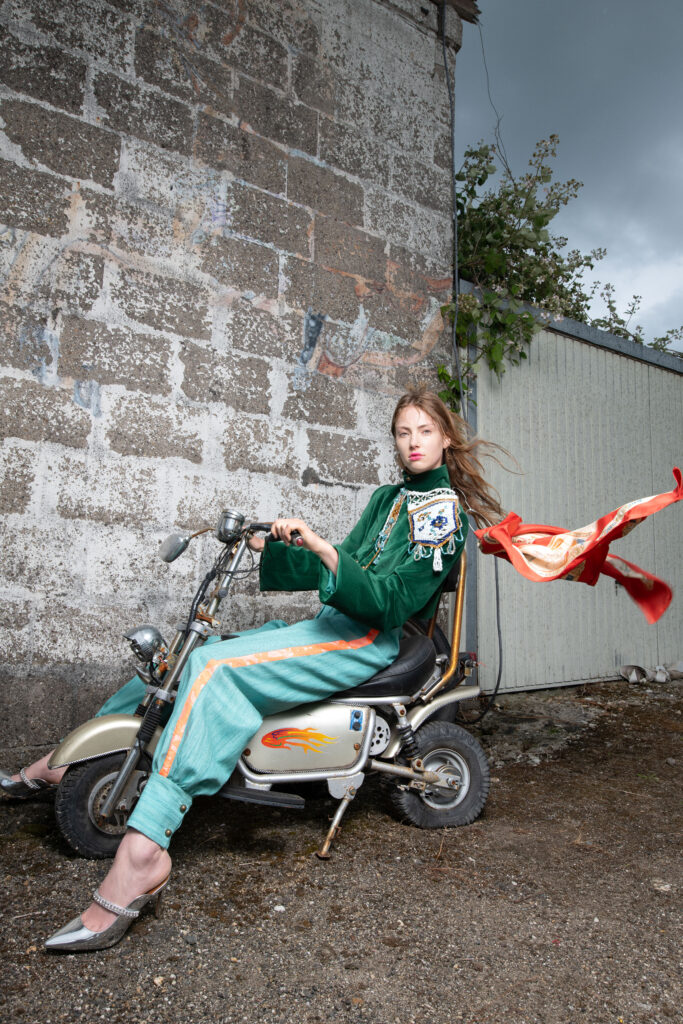
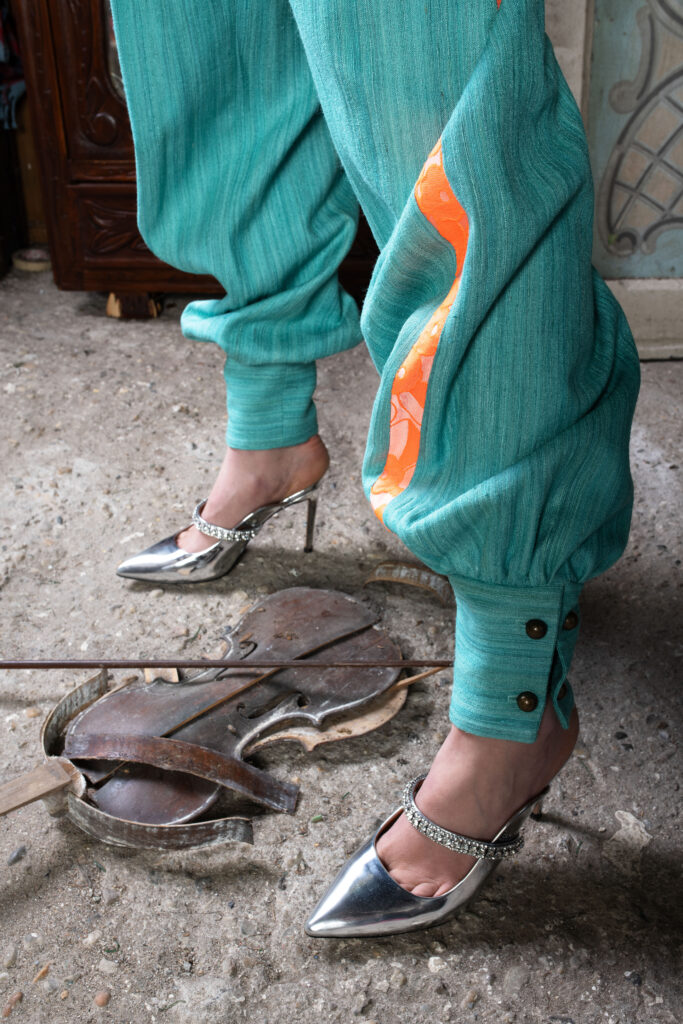
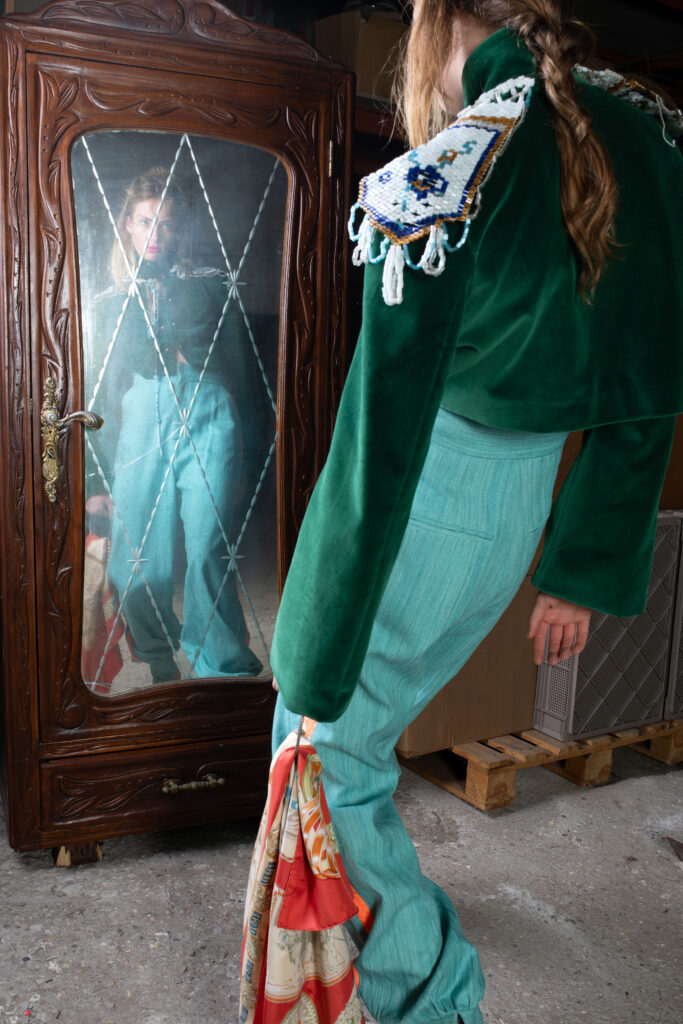
De Boeienkoning
Piet van Doorn, the grandfather of my grandfather, performed at the fair as the ‘Boeienkoning’ together with his son, Piet Jr. Since they made their living by “mansen” (passing the hat around after a performance), they depended mainly on the larger fairs.
The act came about more or less by accident. While Piet Sr. was having a drink at the café, Piet Jr. allowed himself to be tied up by a few sailors, masters in the art of knot-tying. From the café, Piet Sr. saw his son struggling; the more he moved, the tighter the knots became. On the spot, he came up with a clever trick. He approached the scene and said to the sailors, “My son is no match for you, he’s still in training as an Boeienkoning, but why don’t you try with me instead?”
The sailors, convinced that Piet Sr. wouldn’t be able to escape either, wagered a large amount of money hoping to see the act fail. But Piet Sr. wasn’t nicknamed Piet de Boeienkoning for nothing. He was a well-trained, strong man who knew his craft and he definitely escaped.
From that moment on, the act was always performed that way. Piet Sr. continued working as an escape artist at fairs until his death in 1968.
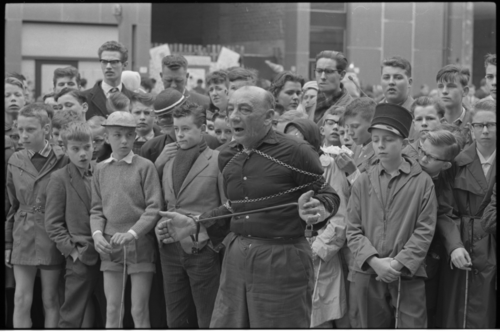
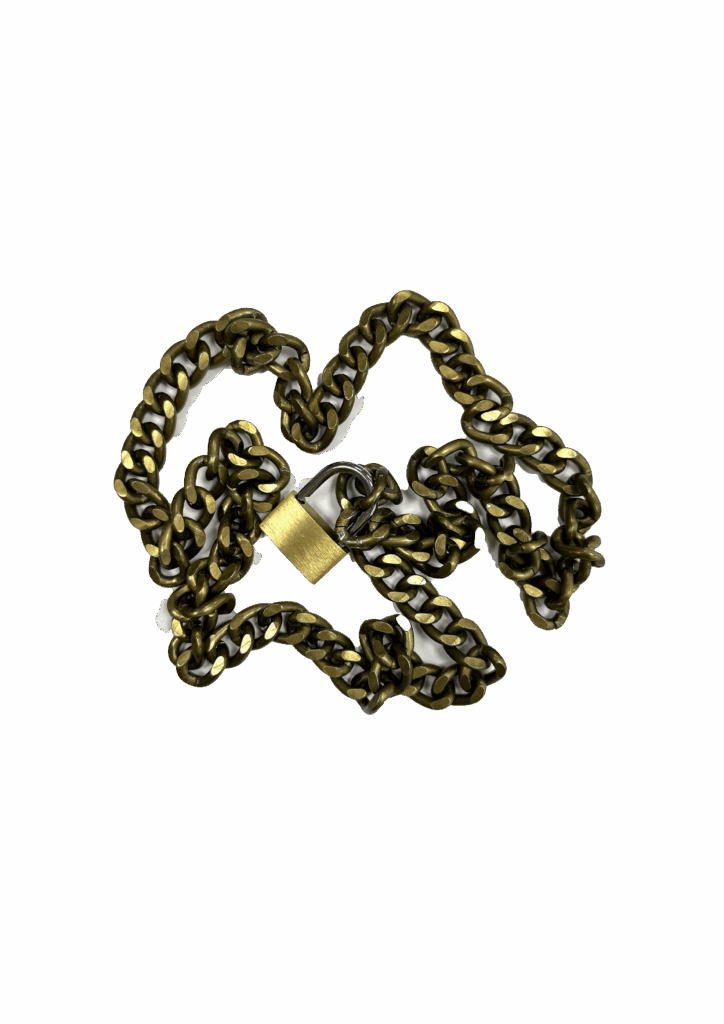
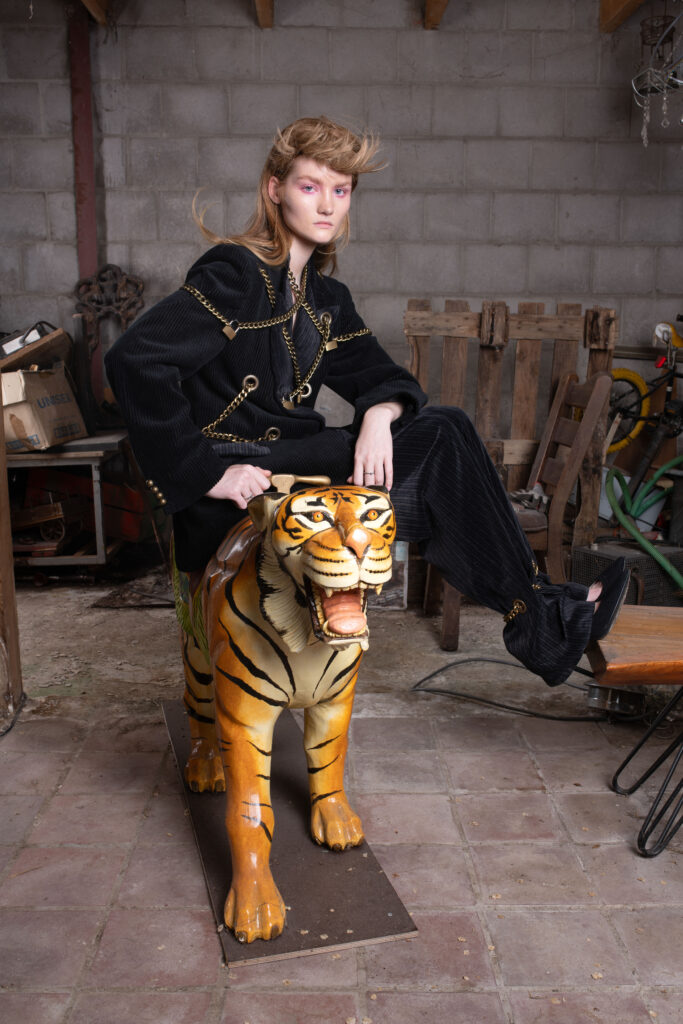
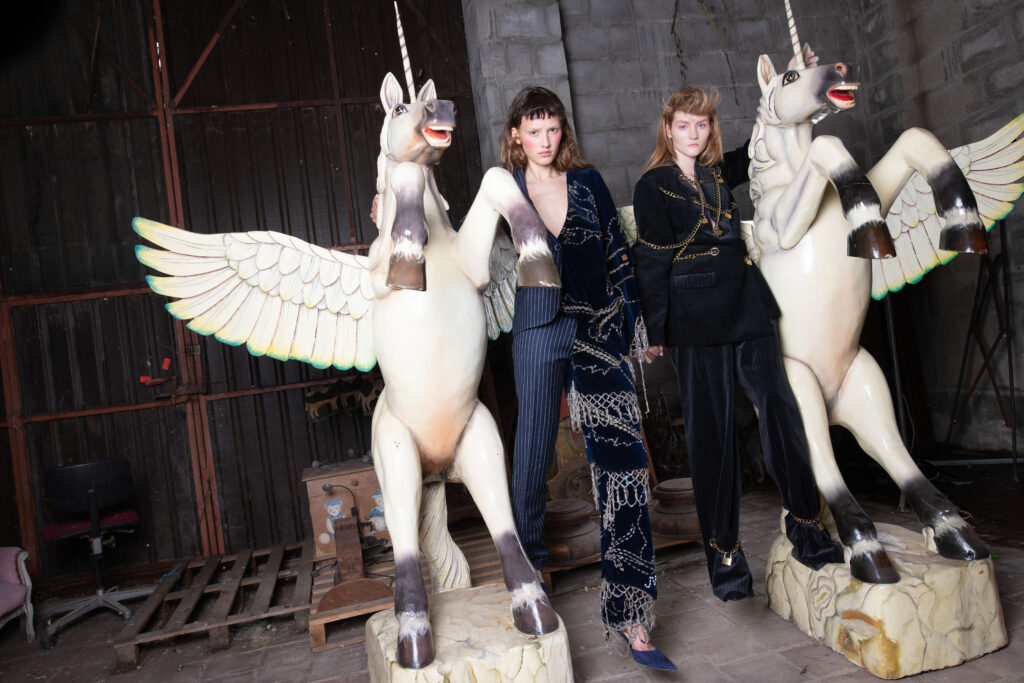
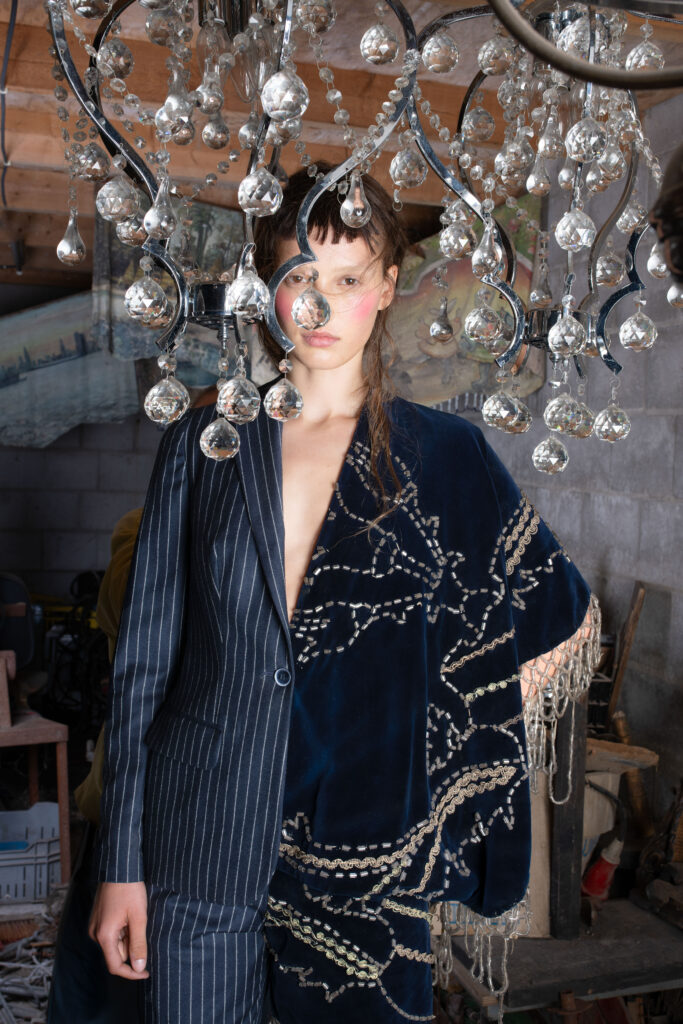
‘Rabatten’
Rabatten are beautiful velvet cloths that are over 100 years old. They were used to decorate carousels at fun fairs, adding a touch of elegance and history to the rides. Each rabatten features a coat of arms and is carefully hand-beaded with tiny glass beads, showing incredible craftsmanship. I was lucky to receive these special pieces from my aunt, making them not just decorative textiles, but meaningful family heirlooms that connect me to the world of the fairground and its rich traditions.
